Why Do I hear a Popping Noise When Slowly Turning the Steering Wheel?
What is the cause of the popping sound when turning at low speed? A popping sound when turning the steering wheel at low speed typically indicates worn CV joints or binding control arm bushings. Over time, cracks in the CV joint boot allow contaminants causing wear. Other causes include worn ball joints, tie rods, sway bar links, low power steering fluid, or bad strut bearings.
Ever turned your steering wheel and heard an annoying popping or clicking noise? This worrisome sound tends to happen when turning at low speeds, and can leave drivers concerned about potential underlying issues.
In this guide, we’ll discuss the common causes behind that obnoxious popping steering wheel, explain what’s really happening in your vehicle when you hear this sound, and provide actionable tips to stop the noise for good.
If you’re facing issue of steering wheel not recentering after turn, you can read my guide on that topic.
In the last section, I’ve included comments from forums where users share firsthand experiences with popping noises when turning. Be sure to check out that section for real insights.
- Worn CV joints and ball joints can cause popping noises when turning at low speeds due to lack of lubrication.
- Damaged strut bearings lose ability to cushion, leading to knocking noises during turns.
- Broken sway bar links create loose connections, resulting in clunking sounds.
- Bushings and ball joints in tie rods and control arms wear out over time, producing popping sounds.
- Issues like low power steering fluid, bad steering rack boot, or binding plastic wheel cover can also trigger popping noises.
My Personal Experience With Popping Noises When Turning
Once, it happened to my colleague John when he was driving his 2015 Toyota Yaris. He noticed a loud popping noise from the front wheels when turning the steering at low speeds. I advised him to check the outer tie rod ends and the CV axle joints. We found a torn CV boot allowing dirt inside, which had damaged the joint. We replaced both CV axle shafts and it solved the popping noise issue.
Causes Of Popping Sound When Turning Steering Wheel At Slow Speed
Here are the causes of the popping sound when turning steering wheel at low speed:
1. Worn CV Joints Creating Popping Noises
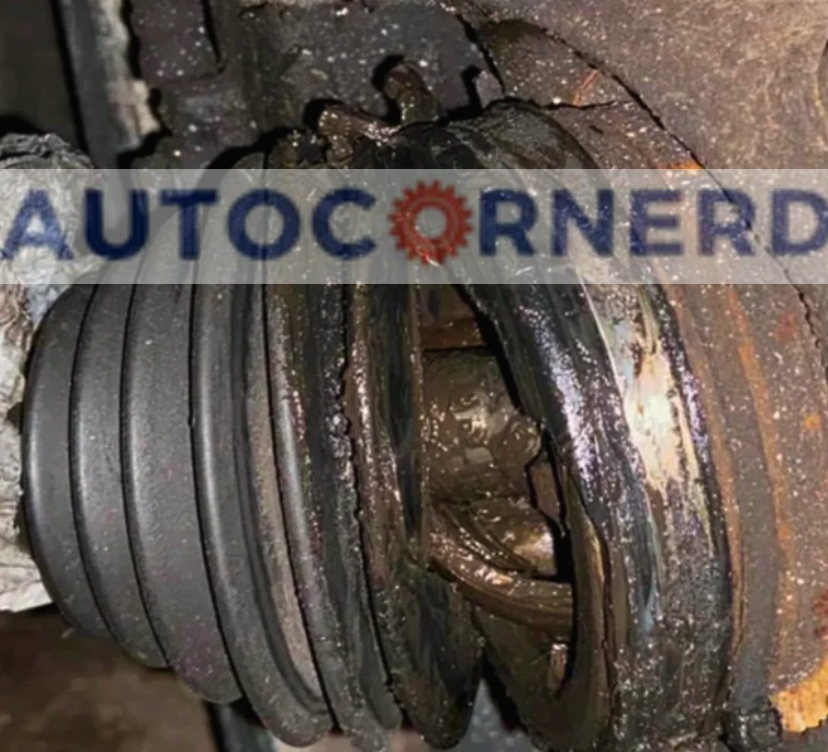
The CV joint is a clever piece of engineering that lets the wheels turn smoothly while transferring power from the engine. It’s a critical part of front-wheel drive cars. So how does it work its magic? Let’s break it down.
Inside the rubber boot at each wheel are bearings lubricated by grease. These bearings connect the axle shaft to the wheel hub or transmission. As the suspension moves up and down, the CV joint flexes to maintain a smooth transfer of torque.
Without healthy CV joints, turning the steering wheel slowly would pop and click. That’s the sound of strained joints trying to compensate for damage.
An outer CV joint gone bad clicks when steering. An inner one clunks or grinds. Neither sound means happy motoring.
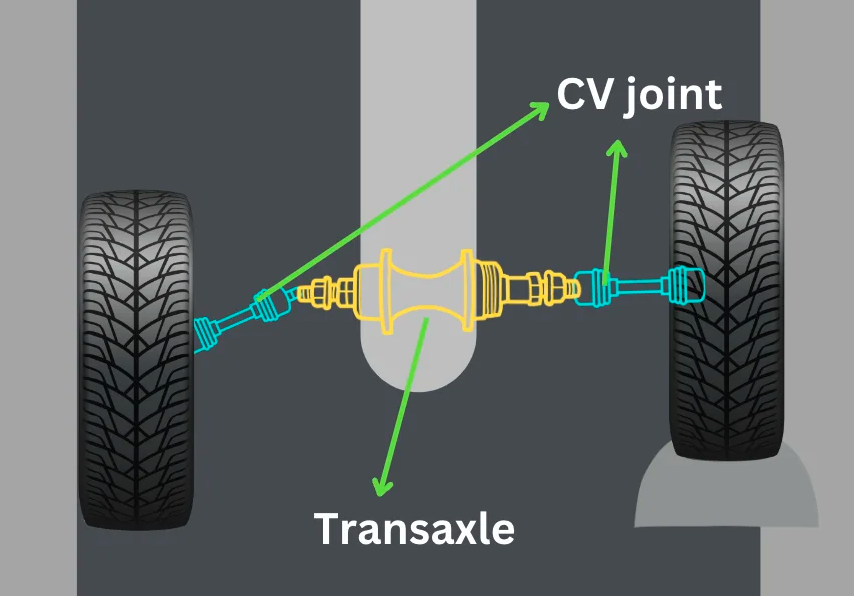
I have outlined these details in my comprehensive guide regarding the potential transmission damage caused by a faulty CV joint. Nevertheless, it is advisable to inspect both CV joints, as determining the exact nature of the noise can often be challenging.
How CV joint becomes bad?
CV joints can make noise when they are damaged or worn out. This can happen for several reasons, such as:
- The boot is torn or cracked, allowing grease to leak out, and dirt and moisture to get in.
- The grease is contaminated or dried out, causing metal-to-metal contact and friction.
- The ball bearings or rollers are loose or broken, causing play and vibration.
- The cage or housing of bearings is cracked or deformed, causing misalignment and binding.
When you’re taking off the CV joint rubber boot and bearing, make sure to give those splines on the CV shaft/axle a good look too. Why? Well, worn splines can create some play in the CV joint, causing those annoying clicking sounds to pop up. So, it’s important to inspect everything thoroughly to avoid any unexpected surprises.
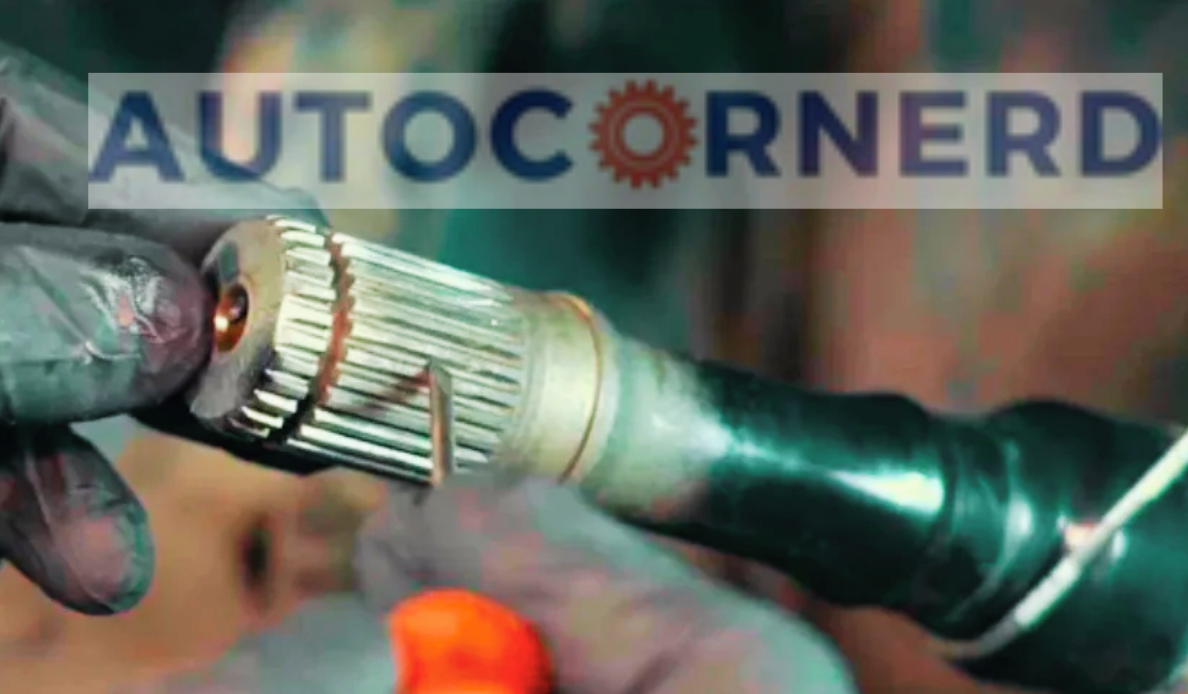
To remove the CV axle, you can watch the following video:
2. Worn Strut Bearings Causing Knocking Sounds
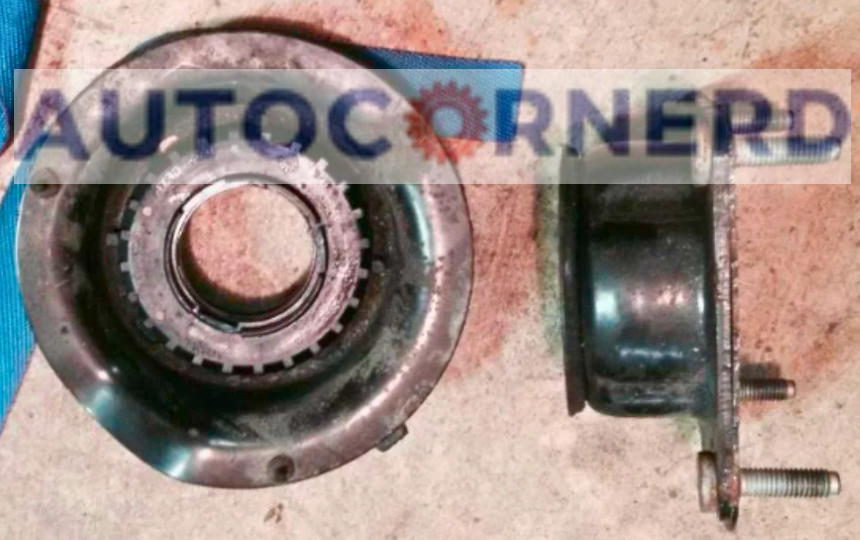
The strut mount is a metal or plastic housing at the top of the strut assembly. Inside the housing are the strut bearings and a rubber bushing. The bushing acts like a cushion to reduce vibrations.
The strut bearings have some key jobs. First, they are pivot points so the strut can move up and down over bumps. This cushions the ride. Second, the bearings reduce noise and vibration between the strut and body. Third, they let the strut rotate when steering. This allows smooth turning.
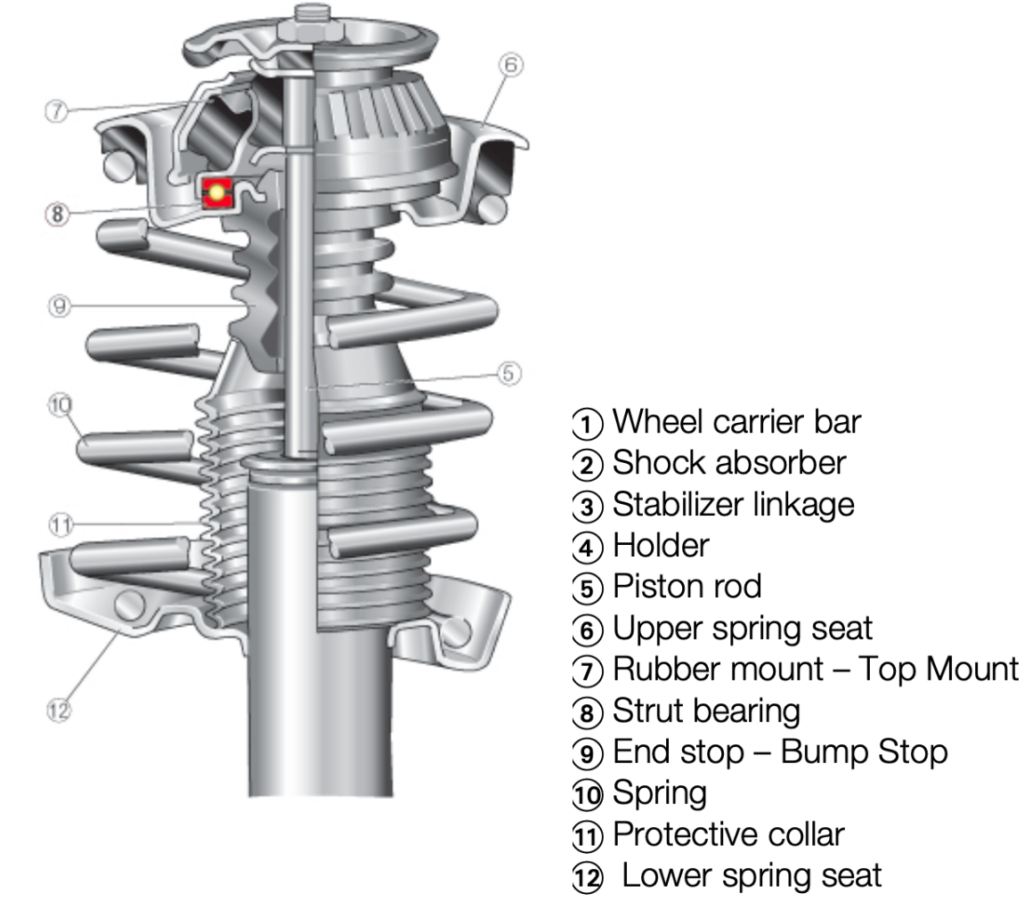
Worn strut bearings can’t rotate easily. This causes a popping or creaking when steering at low speeds. The popping happens because of increased friction on the bearings.
Damaged strut bearings also lose their ability to absorb shocks well. This increases friction between the strut and body. It causes uneven motion.
With bad strut bearings, extra stress occurs when steering. The worn bearings can’t handle it. This leads to popping noises during turns.
Also, if the strut bearing’s mounting plate isn’t tight enough, clunking and popping can happen when turning slowly.
Common Causes of Strut Bearing Failure
Over time, strut bearings can get worn out due to a few different reasons. Understanding what causes strut bearings to fail can help you prevent it.
- Like any other moving part on your vehicle, strut bearings get worn down simply from being used over and over. All those bumps and vibrations take their toll. The rubber and metal pieces slowly degrade until the bearing doesn’t slide as smoothly anymore.
- Strut bearings also need grease to keep everything sliding properly. If the grease dries up or gets dirty, the bearing won’t glide as easily. More friction means faster wear. Gotta keep those bearings lubed!
- Mother Nature can be hard on strut bearings too. Really cold or hot weather can make the rubber crack and metal corrode faster. Lots of rain or mud can wash away grease and allow rust to take hold. Over time, the bearing gets weaker and just can’t handle the forces on it.
Here is what a bad strut bearing looks like:
3. Broken Sway Bar Links Leading to Clunking
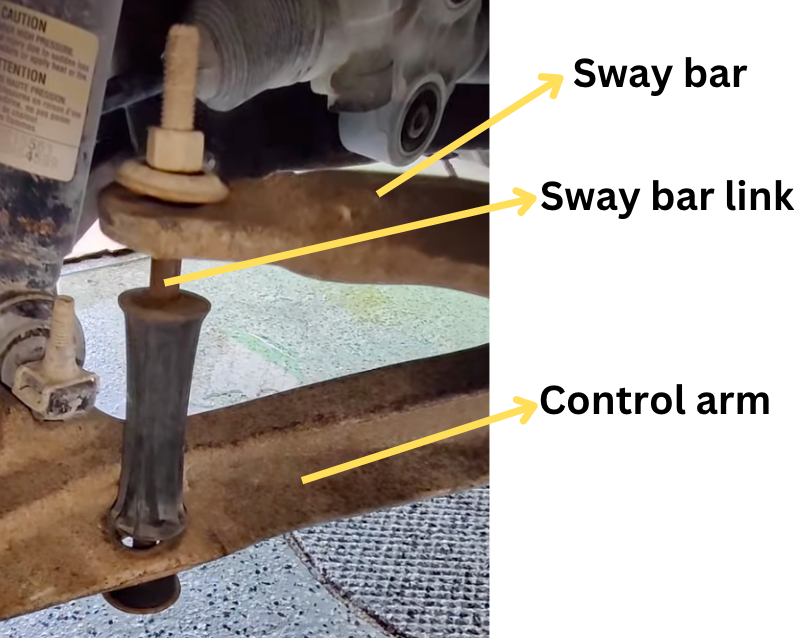
When you turn the steering wheel, the weight of your vehicle shifts to one side. This weight transfer can cause the vehicle to lean or roll, which can affect stability and handling.
Here is where the sway bar comes into play. They help to distribute the weight evenly between the left and right sides of the vehicle, minimizing body roll and keeping it more stable during turns.
You can read my guide on sway bar vs strut bar to learn more.
Sway bar links connect the sway bar to the control arms, aiding in the vehicle’s stability.
Positioned vertically beneath the vehicle, these links pass through the horizontal sway bar to connect it with the lower control arm. Two sway bar links are typically present, with one on the left side and another on the right side.
When these sway bar links become damaged or worn out, they can cause a variety of issues.
One common symptom is a clunking or knocking sound when turning the steering wheel at low speeds. This can be due to excessive play or movement in the damaged sway bar links, which can create a knocking noise as the vehicle’s weight shifts during turns.
How to inspect sway bar links?
The sway bar on your car helps control body roll when cornering. It connects the left and right side suspension parts to keep the car stable. Sway bar links attach the sway bar to the control arms. Checking them is part of routine suspension inspection.
Look under your lifted car to inspect the sway bar links. See if the metal parts are cracked, bent, or rusty. Rubber boots should not be torn or leaking fluid. Damage means the links need replacing.
Also check if links move when you wiggle them. Movement indicates worn out bushings. New sway bar links will restore proper handling.
4. Worn-out Bushings and Ball Joints of Tie Rods and Suspension Components
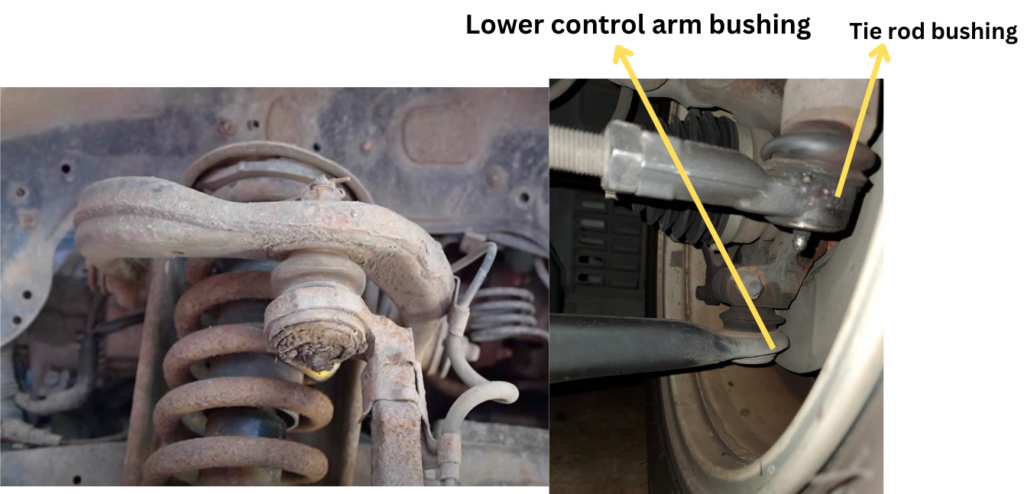
Dou know how your car has all those rubber and metal bits under the hood holding everything together? Well those parts can wear out over time, and then you’ve got trouble. Let’s talk about two especially important pieces – bushings and ball joints.
Bushings are like little squishy cushions between the metal arms and rods of your suspension. They help absorb bumps and noise, and let your steering wheel turn smooth as butter.
But after years of potholes and bumpy roads, those bushings in tie rods and suspension components can get cracked and flattened. Then they lose their squish! Without that cushion, your car starts to shake and rattle down the road. Steering gets stiffer too. No more butter.
Ball joints are tricky little pivot points that connect the steering wheel knuckles to the rest of the suspension.
They’re what let your wheels move up and down over bumps. But ball joints can get loose and sloppy after miles of driving. Then you’ll hear knocking and clunking when you turn the wheel. That’s no good! Loose joints make for tippy steering.
How to fix?
To address the problem, you may need to clean and lubricate the ball joints to remove any accumulated dirt and debris.
To lubricate worn-out ball joints, you can use a grease gun to add grease between the ball and socket. This can be done by forcing the grease in under pressure via a nipple or by using a needle to carefully lift the boot and add grease to the joint.
You can also poke the needle into the boot of the ball joint to fill the grease but make sure to seal the little pinhole with tire patch gel or glue. You can use this grease gun with this grease injecting needle.
In more severe cases of wear or damage, the ball joints may need to be replaced entirely to restore smooth movement and proper steering wheel functionality.
5. Steering Rack Bushing Wear Resulting in Popping
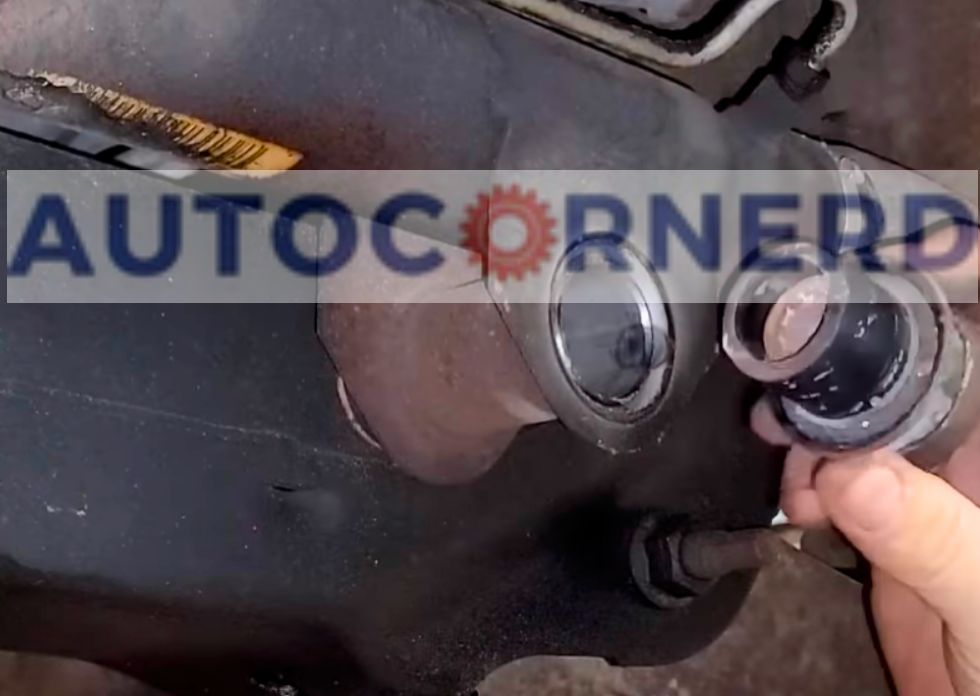
The steering rack bushings work as tiny supportive pads between the steering rack and the vehicle frame, enabling agile and easy handling. These cushions soften shaking and vibrations from the road, giving you a quiet, smooth steering feel so you can drive in comfort.
Over time, repeated bumps and jostles can wear away the bushings’ protective layers. Damaged steering rack bushings lose their shock-absorbing skills, allowing too much unwanted movement between parts. Excess motion leads clunking or popping when slowly cranking the steering wheel.
6. Torn Steering Rack Boot Allowing Debris Inside
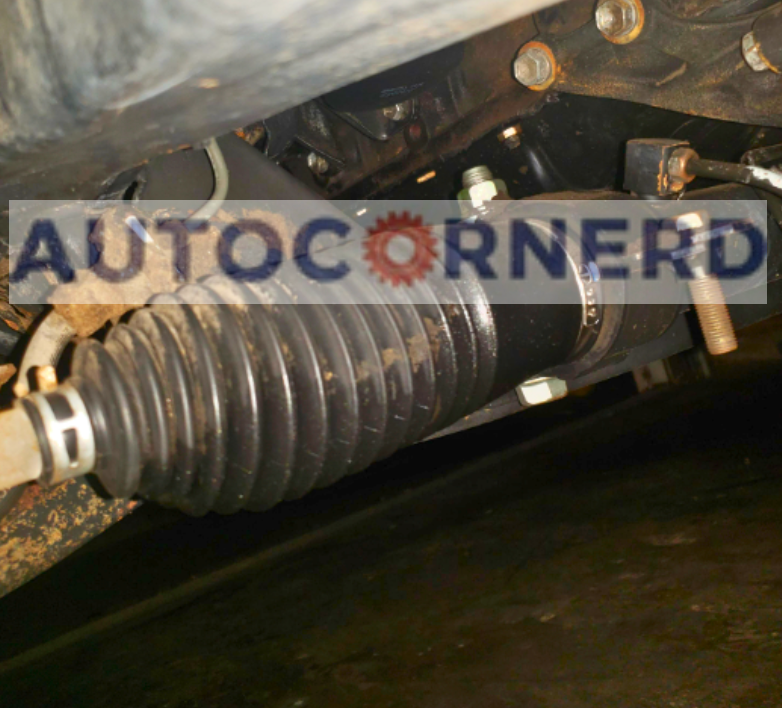
The steering rack boot seals off the steering rack similar to how the CV joint boot contains the CV joint. This vital cover prevents unwanted intruders like dirt, water and other junk from messing up your steering. Without a proper seal, these troublesome particles infiltrate into the rack resulting in uneven wear over extended use.
The steering rack needs a protective boost from contaminants so it can operate smoothly for years to come. Damaged boots spell danger!
Signs a faulty steering boot
Here are signs of a bad steering boot
- Visible damage – Inspect closely for any clear signs like cracks, rips or holes compromising the integrity of the boot’s barrier.
- Grease leakage – Greasy remnants on the steering boot or nearby components point to a breach in the seal.
- Unusual noises – Popping or clicking sounds when turning at slower speeds likely originate from grime buildup within the rack.
- Swollen boot – Bulging seals indicate seals gone bad permitting rack contamination.
- Tight turning – Extra friction felt when spinning from lock-to-lock hints at grime ingestion.
7. Low Power Steering Fluid Flow or Pump Failure
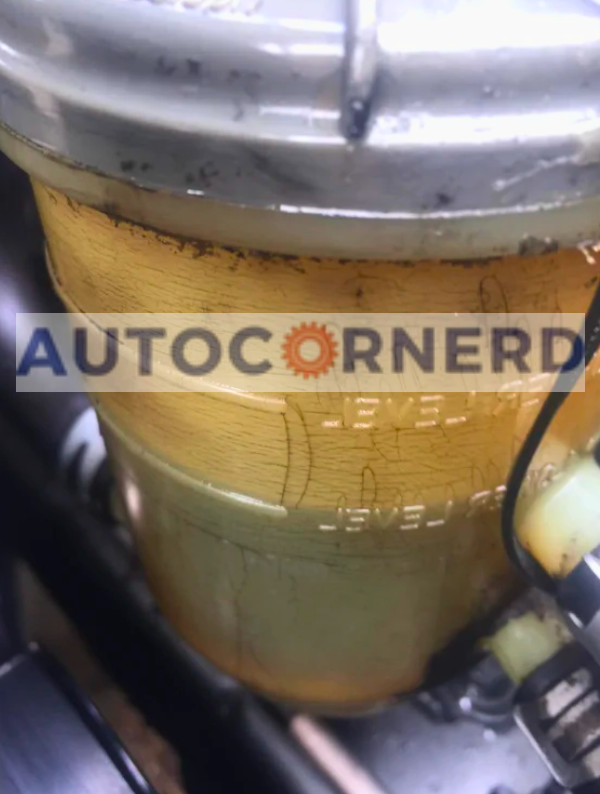
The hydraulic steering wheel needs fluid power. This comes from a little steering pump. The pump gets spun by the engine’s belt while driving. Faster driving turns the pump faster too.
The quick fluid push helps turn the wheel without much effort. It’s also slippery to let the steering parts move easily.
Low steering fluid could mean the pump can’t make enough push. Metal parts rub without the fluid to cushion between them. You may hear popping from this.
Another reason for popping when slowly turning could be air got in somehow. Air bubbles make the steering fluid less helpful. It also pops when forced through small spaces.
Holes anywhere can let air sneak in. Just being low on fluid lets air enter too. Or if a part was replaced recently.
The steering fluid needs to be all liquid to work right. Air bubbles hurt its job and make noise.
How to fix?
To fix this problem, you need to bleed the air out of the system by turning the steering wheel from lock to lock several times with the engine running. You may also need to add more fluid if necessary.
8. Binding of Steering Wheel Plastic Shroud
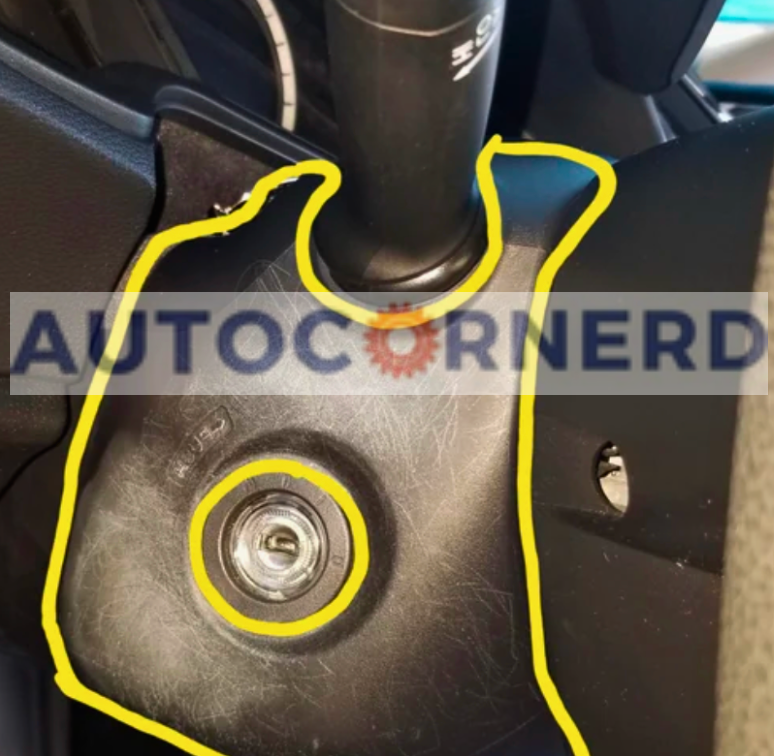
The plastic shroud cover envelops the sensitive innards of the steering wheel, guarding pieces like wires and airbag parts. This cloak also gives an eye-pleasing smooth look to the wheel.
With time and use, the snug fit of the cover can loosen, letting it rub and clank against other steering parts when you turn the wheel. If installation was shaky or damage happens, the same bothersome sounds and friction can start grating as you drive.
Another culprit for binding and squeaking as you spin the wheel stems from poor alignment of the plastic shroud cover. If overlapping edges sit askew, uneven contact with neighboring components leads to difficult turning and noise.
How to fix?
One of my friends fixed this issue by removing the shroud cover and remounting it. The popping noise went away. You can remove the shroud cover using a screwdriver or pry tool.
If you find any debris on the plastic shroud cover, you should clean it using a soft cloth and mild soap. You should also wipe off any grease or dust from the steering column and the upper shroud.
What To Do If I Hear Popping Noise When Turning The Car?
If you suddenly hear a popping or clicking noise when turning your steering wheel, don’t ignore it – it likely signals an issue that needs attention. Start by checking the outer tie rod ends.
These ball joints connect the steering knuckles to the inner tie rod, and wear out over time. If loose or worn out, they can definitely cause popping noises during turns. Carefully inspect the rubber boots around the tie rods as well. If cracked or torn, gritty road debris can get inside and degrade the joints.
Another common culprit is the CV axle shaft. These shafts have CV joints at both ends which let the wheels move up and down while turning.
The rubber CV boots keep lubricants in and contaminants out. When torn, the joints wear out rapidly.
As they lose lubrication, they click and pop with steering movements. Listen for clicks accelerating and decelerating too. That points to failing CV joints.
Don’t forget the steering rack bushings either. Like other suspension bushings, these cushion the rack housing.
When worn, the rack shifts inside the bushings, causing a knock or pop with turns. Bushings tend to fail around 60-100k miles.
Final Thoughts
After reading through this detailed post, I hope you feel more enlightened about what could be causing the popping noise when turning your steering wheel at slow speeds.
You might have learnt that how wear and damage to parts like the CV joints, strut bearings and sway bar links can lead to popping noise.
If you have any questions, you can ask in the comment section. I will try to reply with detailed explanation.
Some First Hand Experiences Shared By Users In Different Communities
Our team conducted research across various online communities, forums, and subreddits to gather user comments and opinions on “popping noise when turning at low speed”.
User 1 says:
I drive a 2016 Chevy Colorado, and I faced this popping issue. It was actually the sway bar links that were causing the noise. Replaced them myself, and the sound disappeared. It’s a pretty straightforward fix if you’re handy with tools.
User 2 says:
I own a 2018 Dodge Charger and faced a popping sound when steering at low speeds. Turned out to be the steering column coupler. It’s a known issue in some Dodge models. The dealership replaced it under warranty.
User 3 says:
I had a popping sound in my 2017 Toyota Tacoma when turning at low speeds. After a bit of research, I found out it was due to a worn CV joint. It’s a common issue in Tacomas after some rough usage or high mileage. Replacing the CV joint fixed it.
User 4 says:
Experienced a similar issue with my 2018 Honda Odyssey. The popping sound was due to a loose tie rod end. It got worse over time. My mechanic tightened it during a routine service, and that solved the problem. Always check steering components!
